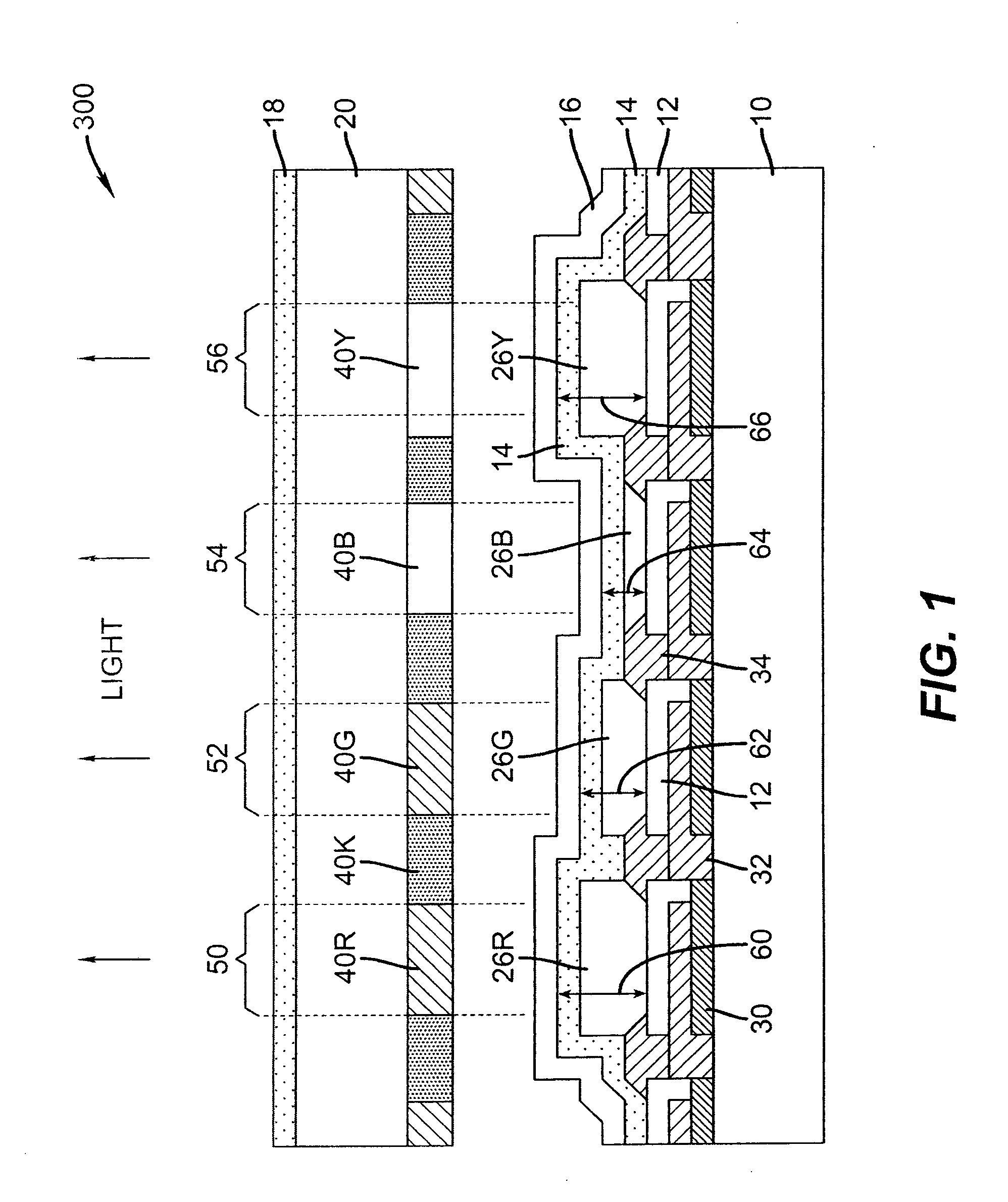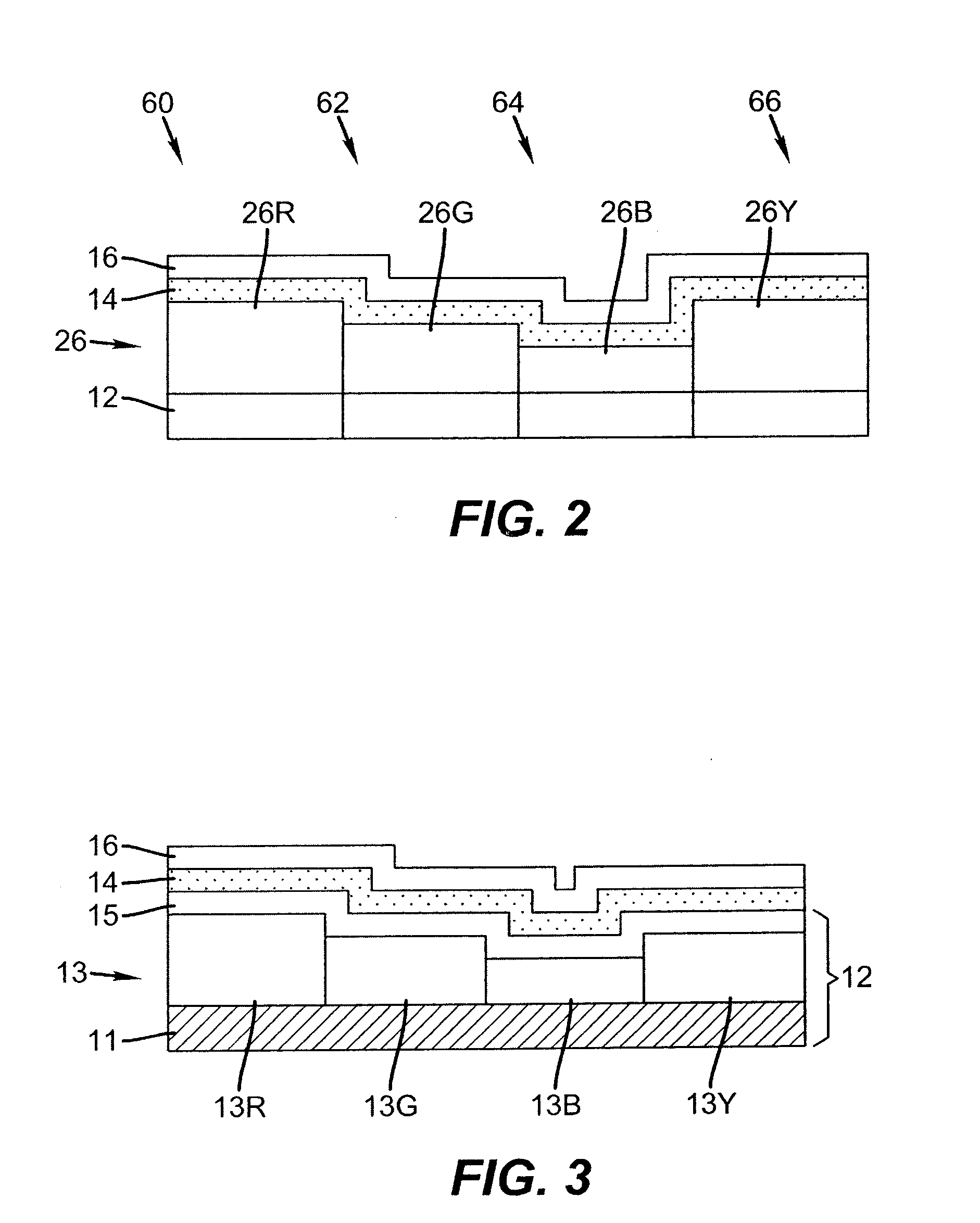LED device having improved light output
- Summary
- Abstract
- Description
- Claims
- Application Information
AI Technical Summary
Benefits of technology
Problems solved by technology
Method used
Image
Examples
Embodiment Construction
[0031]Referring to FIG. 1, an exemplary embodiment of a light-emitting diode device according to the present invention comprises a substrate 10, a reflective electrode 12, and a semi-transparent electrode 16 formed over the substrate 10. Either the reflective electrodes 12 or semi-transparent electrodes 16 are patterned to form a plurality of independently-controllable light-emitting sub-pixel elements 50, 52, 54, and 56. As shown in FIG. 1, for example, reflective electrode 12 is patterned. The independently-controllable light-emitting elements can be controlled, for example by thin-film electronic components 30 formed on the substrate 10. The other electrode (e.g. 16) can be unpatterned and electrically common to all of the light-emitting elements 50, 52, 54, and 56. An unpatterned light-emitting layer 14 is formed between the reflective electrode 12 and the semi-transparent electrode 16 and includes multiple layers. The reflective electrode 12, semi-transparent electrode 16, and ...
PUM
 Login to View More
Login to View More Abstract
Description
Claims
Application Information
 Login to View More
Login to View More - R&D
- Intellectual Property
- Life Sciences
- Materials
- Tech Scout
- Unparalleled Data Quality
- Higher Quality Content
- 60% Fewer Hallucinations
Browse by: Latest US Patents, China's latest patents, Technical Efficacy Thesaurus, Application Domain, Technology Topic, Popular Technical Reports.
© 2025 PatSnap. All rights reserved.Legal|Privacy policy|Modern Slavery Act Transparency Statement|Sitemap|About US| Contact US: help@patsnap.com



